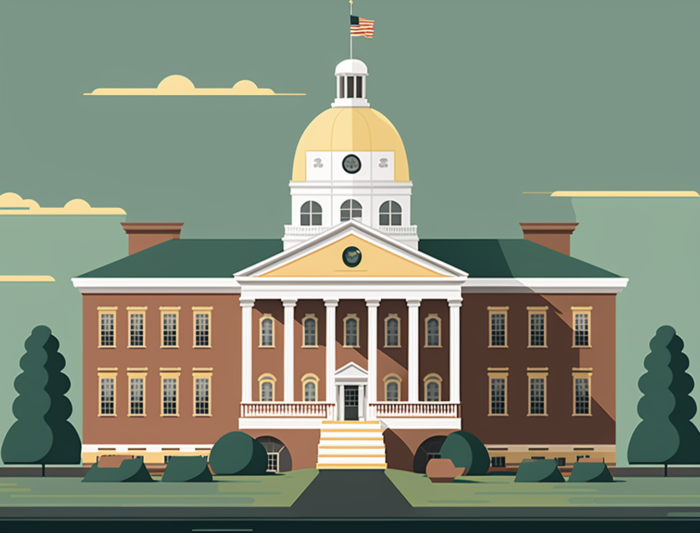
“State government is the level of government that impacts people’s lives the most and is covered the least.” That’s what Chris Fitzsimon, the director and publisher of States Newsroom, believes. His nonprofit news network, which operates more than 30 digital news organizations from Alaska to Florida, is getting a major boost to help address that gap.
Pew Charitable Trusts announced Wednesday that it will transfer its Stateline news service to States Newsroom, and will provide a $3 million grant to help ease the transition.
Stateline will get a redesigned website at Stateline.org this spring and a new home for its nonpartisan reporting on trends in state policy in News from the States. The new addition represents a significant expansion for States Newsroom, bringing its headcount to roughly 180 journalists dedicated to covering state politics and policy across the U.S.States Newsroom was “incubated” at launch by the progressive nonprofit Hopewell Fund before becoming its own nonprofit in 2019. (The newsroom, which publicly lists every donation over $500, did not receive funding from Hopewell.) Its newsrooms are studded with experienced reporters — often snapped up from local newspapers — who are guided by five national editors. The network publishes a national roundup, a newsletter on abortion rights, and (often left-leaning) editorials and commentary in separate opinion sections.
States Newsroom currently has journalists on the ground in 32 states. The network also partners with nonprofit newsrooms in eight additional states, including The Texas Tribune, Vermont Digger, and Mountain State Spotlight in West Virginia.As part of Pew Charitable Trusts, Stateline has covered trends in politics and policy that cut across state lines for the past two decades. Recent articles have looked at how Republican legislators are raising new barriers to ballot measures after voters in some conservative states turned out to support abortion rights, what states and cities are doing about a dangerous additive appearing in street drugs, and the states considering ending “turn right on red” after a rise in pedestrian deaths. Stateline also keeps closer tabs on rural communities in America — including a lack of lawyers and an experiment to help hospitals in rural areas — than your average national publication.
Stateline executive editor Scott Greenberger, who used to be a statehouse reporter in Texas and Massachusetts himself, stressed how difficult it is for a reporter busy with a single legislature to keep up with what was happening in the other 49 capitals. With gridlock in Washington, D.C., more action is taking place at the state level — and that includes national groups pushing policy agendas in multiple states at once, Greenberger said.
“If you’re a statehouse reporter focused on a single statehouse, you might not understand that some legislation is part of something bigger,” Greenberger said. “That broader perspective is a big part of the value of Stateline that provides.”
The newly merged newsrooms will use their reporting power to compare the ways different states are dealing with similar challenges — like water access issues, housing shortages, and rules around the 2024 election.
“The election will be decided nationally, but how people vote, when they can vote, and who can vote — all those decisions are not made in Washington. They’re made in state capitals across the country,” noted Fitzsimon, pointing to Stateline’s coverage of proposed changes to election rules. “Very rarely do things happen in a vacuum in one state capital, whether it’s the changes in higher education, the debate over critical race theory, or transgender rights. Those things are not only related but, in many cases, they’re being pushed by the same folks. We want to continue to work, with Stateline’s expertise, to figure out who those folks are, what their agendas are, how it’s translating across each capital, and what it means to people who live there.”
The news comes after years of newspapers reducing the number of journalists dedicated to statehouse coverage. A surge in nonprofit newsrooms has partially made up for the newspaper losses. Twenty percent of the reporters covering U.S. statehouses work for nonprofits, according to a Pew Research report we covered last year.
The decision to find a new home for Stateline reflects those changes in the news industry, as well as the news service’s odd fit within an organization more dedicated to policy than journalism.
“Pew made the decision that at this exciting time for nonprofit news outlets and this very important time for statehouse coverage, Stateline would be able to grow and flourish in an organization that was focused purely on news, as opposed to one that where journalism was just part of the mission,” Greenberger said. “It made sense for it to be part of a journalism-only organization.”“I think this merger with States Newsroom gives us a footprint that no one else can even come close to matching,” he added. “We’re not just a handful of reporters in odd places.”
States Newsroom plans to expand, but only where it can fill a gap in news coverage, Fitzsimon said.
“You’ll see us in the states where there is not a strong, thriving daily nonprofit,” Fitzsimon said. “Many nonprofits that pop up are [focused on] long-term investigative reporting, which I totally support and think is wonderful. But we also need the daily hard-hitting coverage to complement that. At some point we’ll have some presence, whether it’s a partner or a newsroom, in 50 states and complement that with the great work that Scott and his team do at Stateline.”
“Both organizations were doing good work, but this takes it to a new level,” he added. “We need more coverage. We need more transparency on public officials. We need more reporting, because I think even more vital decisions will be made in state capitals in the coming years. This positions us, collectively, to really give people the information they need to make decisions and to find out what’s happening across America, not just in Washington.”